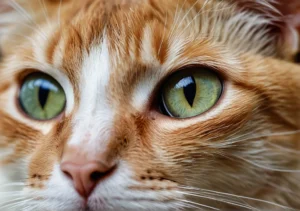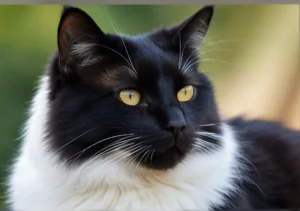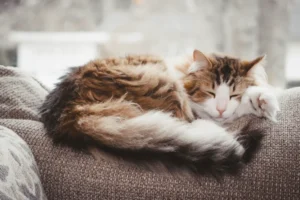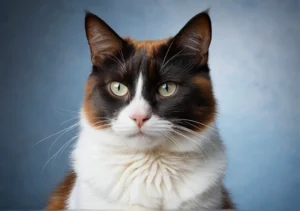Cats are known for their unpredictable nature, from their playful antics to their mysterious behaviors. One common question among cat lovers is why these furry felines give birth to kittens of different colors. Let’s uncover the fascinating reasons behind this phenomenon.
Have you ever wondered why cats give birth to kittens of different colors? The color of a cat’s fur is determined by genetics, specifically by the presence of certain genes that control pigment production.
Genetic Variation in Cats
Did you know that the color of a cat’s fur is determined by its genes? Genetic variations play a significant role in the diverse range of colors we see in kittens. Cats inherit their fur color from their parents through a complex combination of genes. This genetic diversity is why you may have one cat with black fur and another with orange fur, even if they come from the same litter!
One interesting aspect of genetics in cats is the presence of dominant and recessive genes. For example, a cat with a black coat may carry the gene for a white coat, but the black gene is dominant, so the cat will have a black coat. When two cats with different coat colors mate, their offspring can inherit a mix of these genes, resulting in kittens with a variety of colors.
Understanding the role of genetics in determining fur color not only explains why cats give birth to different colored kittens but also highlights the beauty and complexity of nature’s design.
Environmental Factors
While genetics play a significant role in determining a cat’s fur color, environmental factors can also influence the coloration of kittens. For instance, the temperature during gestation can impact the development of a kitten’s fur color. Warmer temperatures may lead to darker fur colors, while cooler temperatures can result in lighter colors.
Another environmental factor that can affect a kitten’s fur color is exposure to UV light. UV light can cause changes in pigmentation, potentially altering the color of a kitten’s fur as they grow. This is why you might notice changes in your cat’s coat color when they spend more time in the sun.
By considering both genetic variations and environmental factors, we can better understand why cats give birth to kittens with a diverse range of colors.
Evolutionary Adaptations
Cats giving birth to different colored kittens can be attributed to evolutionary adaptations. In the wild, having a variety of fur colors can help cats blend into their natural habitats, providing them with camouflage to avoid predators or sneak up on prey. Through natural selection, cats with colors that match their surroundings are more likely to survive and pass on their genes to future generations, leading to a diverse range of coat colors we see today.
An additional insight into this is that certain coat colors may also provide thermal benefits to cats in different environments. Darker fur, for example, can absorb more heat from the sun, making it advantageous for cats living in colder climates. On the other hand, lighter fur can help cats stay cooler in hotter climates by reflecting sunlight. This adaptation further showcases the complexity of how coat colors in cats have evolved over time to suit various environmental conditions.
Breeding Practices
Selective breeding by humans has played a significant role in creating cats with specific color patterns and variations over generations. Through intentional mating of cats with desired traits, such as coat color or pattern, humans have been able to influence the genetic makeup of cat populations. This has led to the development of various breeds with distinct coat colors, from the vibrant calico to the sleek siamese.
When selecting cats for breeding, breeders carefully consider the genetic makeup of each cat to ensure the desired coat color will be passed down to the offspring. By controlling which cats mate with each other, breeders can create litters with predictable color outcomes, contributing to the wide array of colors we see in domestic cats today.
Here is a list of popular coat color patterns in cats:
- Tabby: characterized by stripes, swirls, or spots
- Solid: single, uniform color
- Tortoiseshell: blend of two colors, often with patches of orange and black
- Calico: tri-colored with patches of white, orange, and black
- Bi-color: combination of two colors, typically white and another color
When considering cat breeding, it is important to work with reputable breeders who prioritize the health and well-being of the cats in their care. Check out this resource for more information on responsible breeding practices and cat health.
Rare Colorations
Uncover the world of rare and unique cat fur colors, such as chimera cats and cats with color-point patterns, and what causes these unusual colorations. Have you ever heard of chimera cats? They have two different sets of DNA, resulting in a striking two-toned appearance. These felines are incredibly rare and have distinct markings that make them stand out from the crowd. On the other hand, color-point patterns, like those found in Siamese cats, are also uncommon and result from a temperature-sensitive gene that causes certain areas of the cat’s body to develop darker shades, known as points. These intriguing colorations add a touch of mystery and allure to the already fascinating world of cat fur colors.
Another rare coloration to mention is the blue cat. This unique color comes from a diluted black gene, resulting in a bluish-gray coat that is quite striking. Blue cats are not as common as other colors, making them a sought-after choice for many cat enthusiasts. The genetics behind these rare colors are complex and fascinating, showcasing the diversity and beauty found in the world of cat fur variations.
For more in-depth information on rare cat colorations, you can explore this resource.
Fun Facts About Cat Colors
Let’s dive into some fun facts about cat colors that will surprise you! Did you know that all orange tabby cats are male? This unique genetic quirk means that if you come across an orange tabby cat, you can bet it’s a male feline. This interesting fact adds a layer of intrigue to the world of cat genetics and color variations.
Another fascinating tidbit is the genetics behind the rare blue cat. As mentioned earlier, the blue coloration in cats comes from a diluted black gene, giving these felines their distinctive bluish-gray coat. This rare hue adds a touch of elegance and sophistication to any cat sporting this unique color.
By exploring these fun facts and learning more about the genetic factors behind cat colors, we can deepen our understanding and appreciation for the diverse and fascinating world of cat fur variations. Whether you’re a seasoned cat lover or a newcomer to the world of feline friends, there’s always something new and intriguing to discover about these enchanting creatures.
Alex, a passionate animal lover, has experience in training and understanding animal behavior. As a proud pet parent to two dogs and three cats, he founded AnimalReport.net to share insights from animal experts and expand his knowledge of the animal kingdom.




